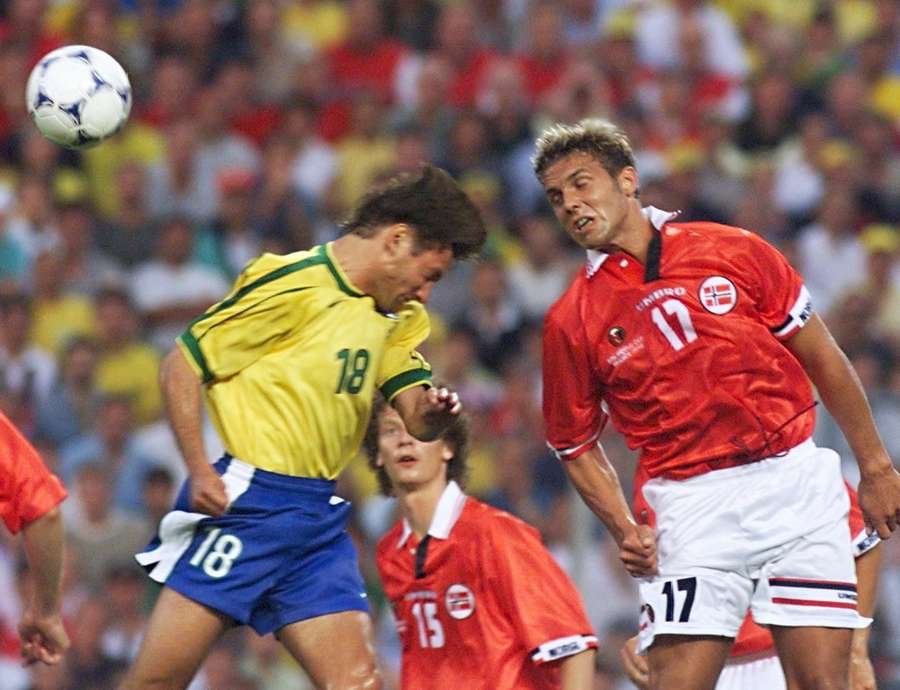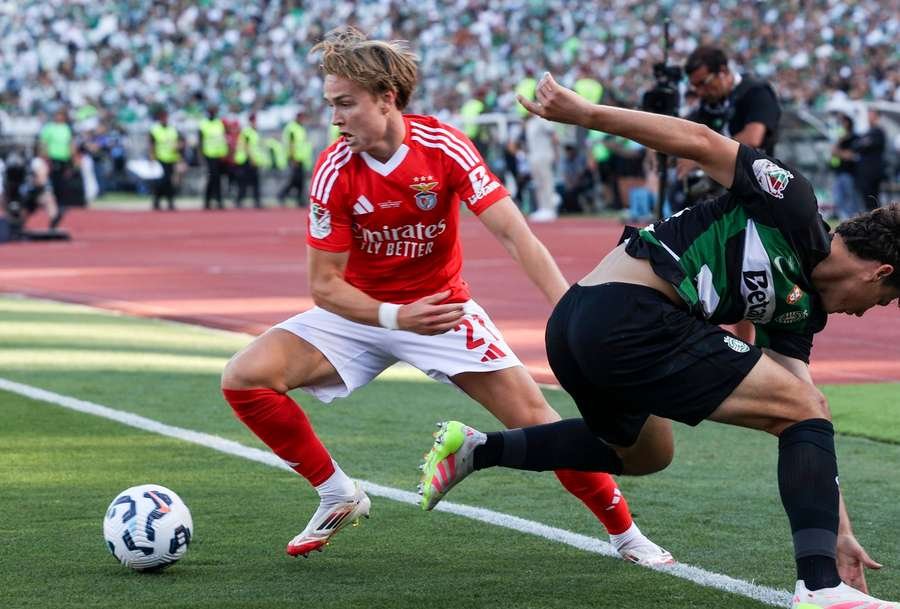With the talents of Erling Haaland, Martin Ødegaard, and a lineup of seasoned professionals from some of Europe’s largest clubs, hope is blossoming in Norway that Ståle Solbakken’s squad can make significant progress towards ending a 25-year hiatus from qualifying for a major tournament when they take on Italy at Ullevaal Stadium in Oslo on Friday night.
The last time Norway made it to a final tournament, Britney Spears ruled the airwaves, Brad Pitt and Jennifer Aniston got married, Sony launched the PlayStation 2, and Vladimir Putin was elected President of Russia.
Back in EURO 2000, Tottenham’s Steffen Iversen secured Norway a thrilling 1-0 victory against Spain in their opening game. However, a draw with Slovenia and a narrow 1-0 loss to FR Yugoslavia saw them exit the tournament prematurely.
At that time, manager Nils Johan Semb was attempting to introduce a brand of football that was more captivating for spectators, following in the footsteps of his predecessor, the “Mad Professor” Egil Olsen. Olsen had gained fame for his unyielding approach to the game, famously wearing Wellington boots in all weather conditions, and for helping Norway make their mark on the global stage by qualifying for the 1998 World Cup—where they famously defeated Brazil—through a starkly direct style of play.

BORIS HORVAT / AFP / AFP / Profimedia
Decades of Struggle
Olsen was a tactical maverick and an early advocate for data and analytics, particularly concerning physical performance. However, he quickly became regarded as somewhat outdated as other coaches caught up with the emphasis on statistics.
At the same time, the once-dominant Rosenborg, the linchpin of Scandinavian football, began to decline, leaving Norway with a dearth of quality players at their disposal.
Since then, Norway’s attempts to break free from an ongoing struggle for success have been fruitless. While it’s unrealistic to expect a nation of 5.5 million to consistently make waves, it’s noteworthy that far smaller European countries have managed to qualify for either the World Cup or the European Championship since 2000.
Countries like Iceland (376,000), Northern Ireland (1.8 million), Wales (3.1 million), the Republic of Ireland (5 million), Albania (2.8 million), North Macedonia (2 million), Slovakia (5.4 million), and Bosnia and Herzegovina (3.2 million) have all made appearances. Norway’s inability to qualify for major tournaments is particularly disheartening when compared to rivals Denmark, which has participated in eight international competitions since Norway last made an appearance in EURO 2000.
A New Dawn
However, a fresh wave of optimism surrounds Norwegian football as they look to compete with football’s elite, in a country traditionally known for its winter sports.
After impressive away victories against Israel and Moldova, winning 4-2 and 5-0 respectively, Norway have climbed to the top of Group I. Expectations are at an all-time high as Ståle Solbakken prepares his team to host the Italian favourites in front of a sold-out Ullevaal Stadium.
For the first time in ages, Norway has a squad filled with attacking flair, spearheaded by Erling Haaland and Martin Ødegaard—a golden generation of talents. Just consider the potential lineup on Friday night when they face Italy.
In a solid defensive setup, Solbakken is likely to select Kristoffer Ajer (Brentford), Leo Skiri Østigard (Hoffenheim), Julian Ryerson (Borussia Dortmund), and David Møller Døhl (AZ Alkmaar). In the midfield, Ødegaard will pull the strings for Norway, supported by Sander Berge (Fulham), Patrick Berg (Bodø/Glimt), and Andreas Schjelderup (Benfica). Up front, Haaland and Alexander Sørloth (Atletico Madrid) will provide an impressive attacking force that few nations can rival.
If needed, Solbakken can also call upon talents like Oscar Bobb (Manchester City), Antonio Nusa (RB Leipzig), and Morten Thorsby (Genoa) among the substitutes.

MIGUEL A. LOPES / EPA / Profimedia
Empowering Young Talents
A key factor behind the formidable squad Ståle Solbakken may select for the upcoming match is the commitment to providing senior opportunities to promising domestic talents from an early age.
Following a dismal campaign in 2017, where Norway suffered defeats against Northern Ireland and Azerbaijan during the qualifiers for the 2018 World Cup, the Norwegian Football Federation opted to increase investment in youth development. This included establishing Youth Academies and a national youth series, alongside changing loan regulations to maximise playing time for young athletes.
Today, the country’s top division, the Eliteserien, has an average player age of 25.1, placing it as the 18th lowest in Europe. Moreover, there is a push within the league to focus on local talent, evidenced by the fact that just 28.9% (the 12th lowest) of players in the Eliteserien are from overseas.
A Bright Future Ahead
Bodø/Glimt’s remarkable journey to the semi-finals of the Europa League this season, where they triumphed over several top European clubs like FC Porto, Olympiakos, and Lazio, highlights Norway’s dedication to youth development and creating pathways for emerging talent.
The club has established a strong reputation for fostering young players and incorporating them into the first team, benefits which Solbakken is now enjoying, particularly with defensive midfielder Patrick Berg’s contributions.
While Norway’s national team may not fully reap the rewards of their youth development focus until around 2028, there has certainly been an increase in the number of Norwegian players in Europe’s top five leagues in recent years.
Norwegians have become accustomed to witnessing their national side fall at the final hurdle, but with the World Cup’s expansion to 48 teams in 2026, Ståle Solbakken’s men are presented with an incredible opportunity to overcome a long-standing national trauma and qualify for their first major tournament in a quarter of a century.
As Lise Klaveness, President of the Norwegian Federation, remarked in the lead-up to this campaign: “There’s an unmistakable feeling that it’s our turn now. That spring is finally arriving after a prolonged winter.”
Compiled by SportArena.com.au.
Fanpage: SportArena.com.au.
LiveScore – Live Sports Results & Odds.




